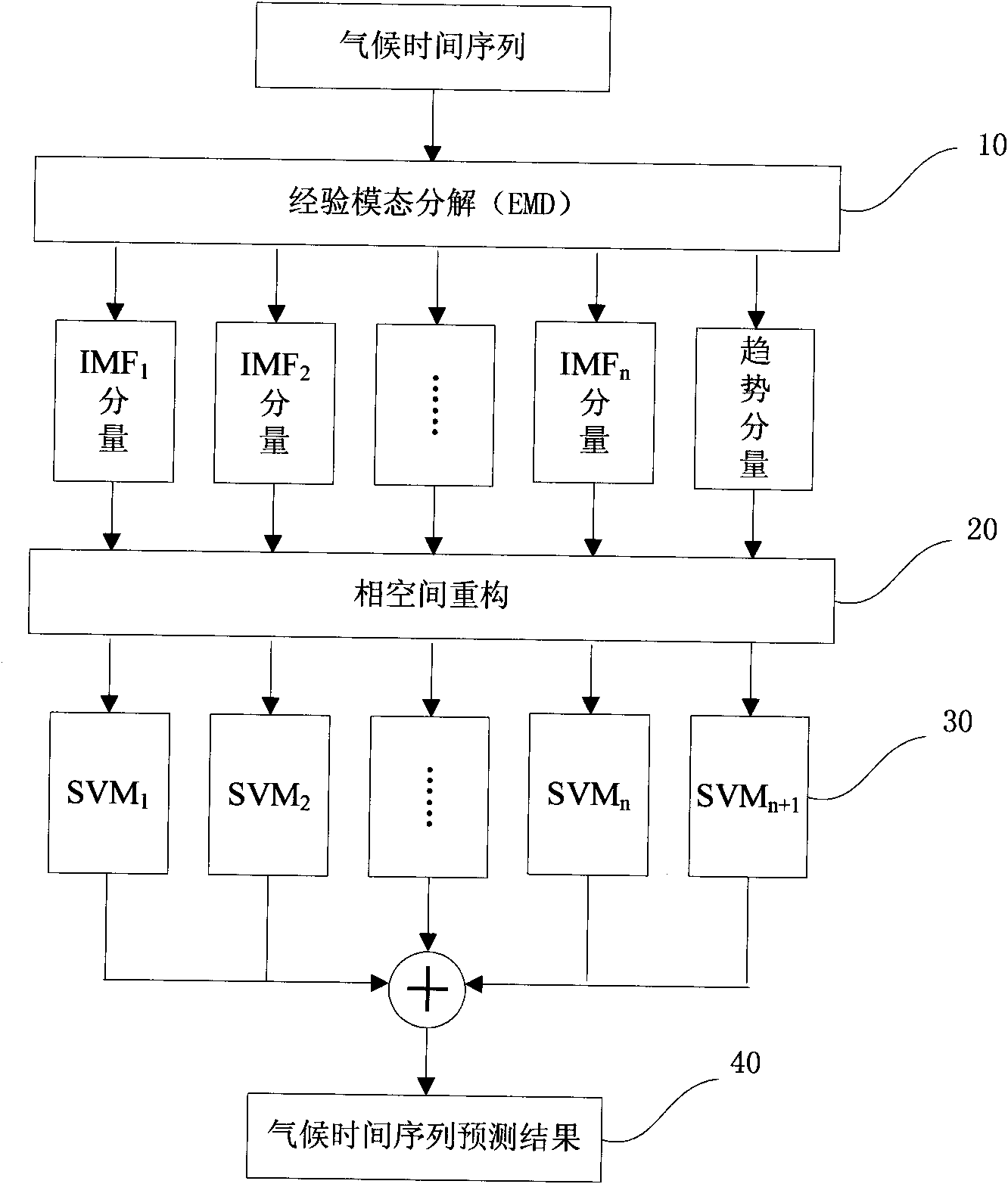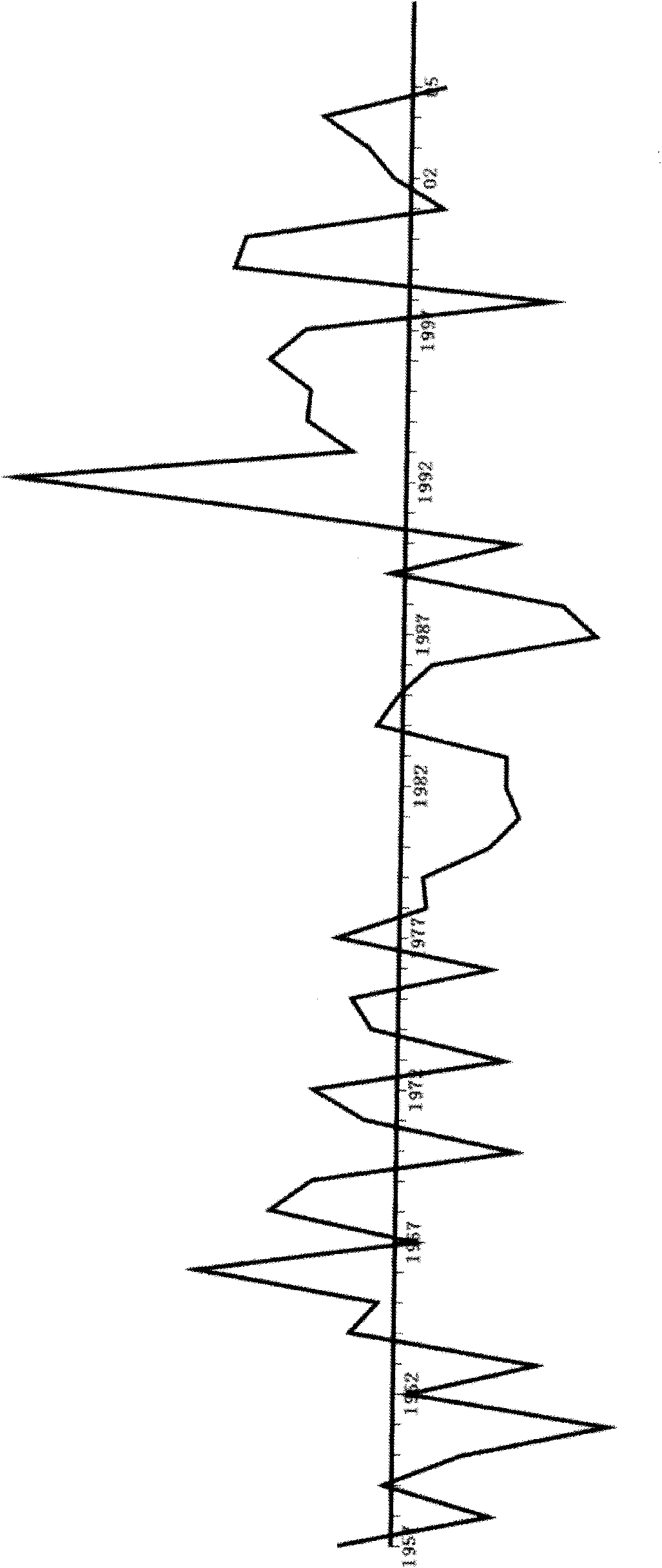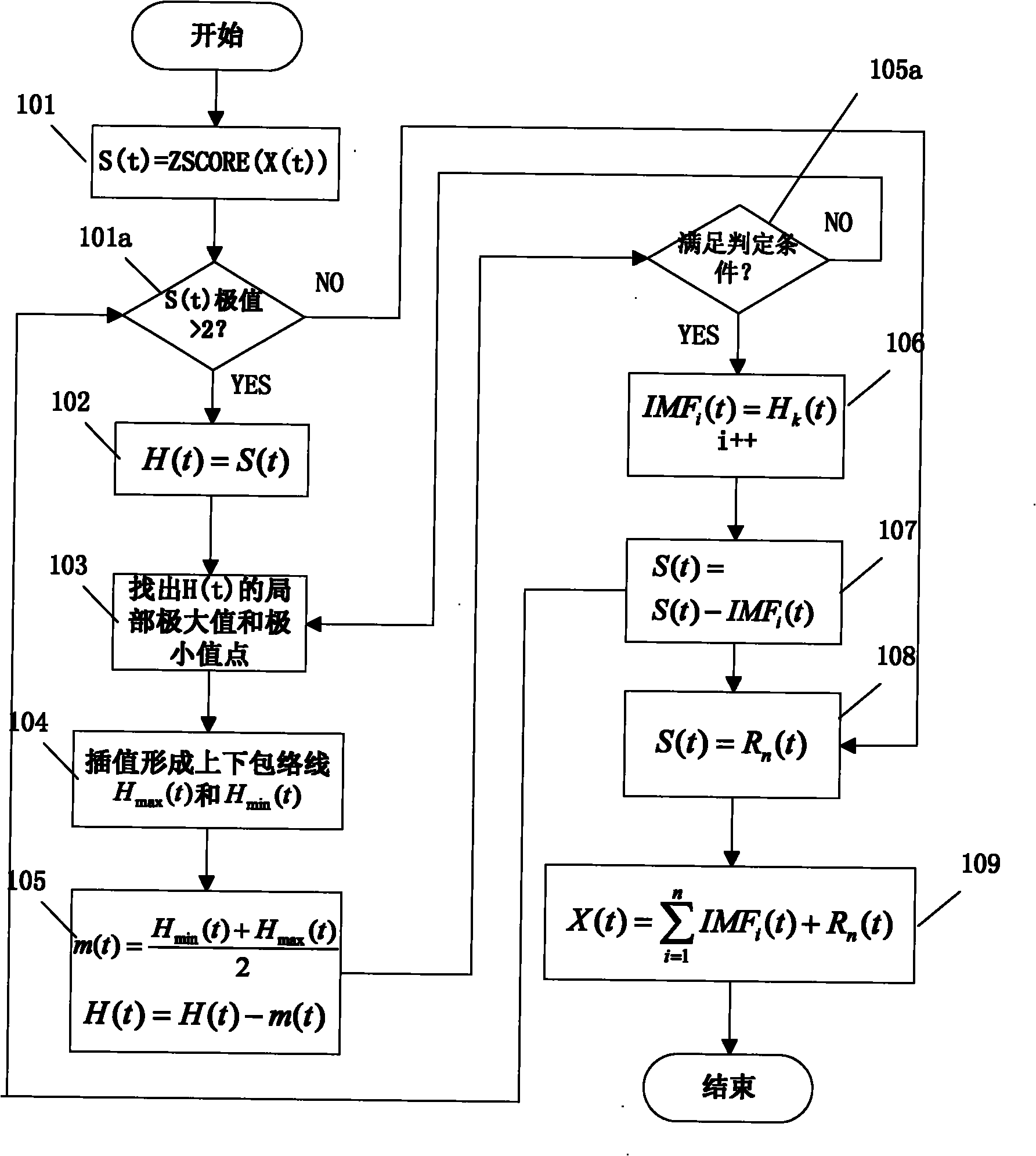Climate time sequence forecasting method based on empirical mode decomposition and support vector machine
A technology of empirical mode decomposition and support vector machine, which is used in weather forecasting, meteorology, measurement devices, etc., and can solve problems that have not yet been involved in climate time series forecasting.
- Summary
- Abstract
- Description
- Claims
- Application Information
AI Technical Summary
Problems solved by technology
Method used
Image
Examples
Embodiment Construction
[0033] The weather time series prediction method based on empirical mode decomposition and support vector machine according to the present invention will be further described in detail below in conjunction with the accompanying drawings and specific embodiments.
[0034] This embodiment adopts as figure 2 The anomaly percentage series (hereinafter referred to as r68) of 88 meteorological observation stations in Guangxi from June to August of 1957 to 2005, a total of 49 data. The empirical mode decomposition (Empirical Mode Decomposition, EMD) algorithm and the least squares support vector machine (Least Squares Support Vector Machines, LS-SVM) regression algorithm are combined to predict the climate time series. Such as figure 1 As shown, the method includes the following steps:
[0035] In step 10, the input climate time series is decomposed into multiple time scales through the empirical mode decomposition algorithm to obtain several Intrinsic Mode Function (IMF) componen...
PUM
 Login to View More
Login to View More Abstract
Description
Claims
Application Information
 Login to View More
Login to View More - R&D
- Intellectual Property
- Life Sciences
- Materials
- Tech Scout
- Unparalleled Data Quality
- Higher Quality Content
- 60% Fewer Hallucinations
Browse by: Latest US Patents, China's latest patents, Technical Efficacy Thesaurus, Application Domain, Technology Topic, Popular Technical Reports.
© 2025 PatSnap. All rights reserved.Legal|Privacy policy|Modern Slavery Act Transparency Statement|Sitemap|About US| Contact US: help@patsnap.com



